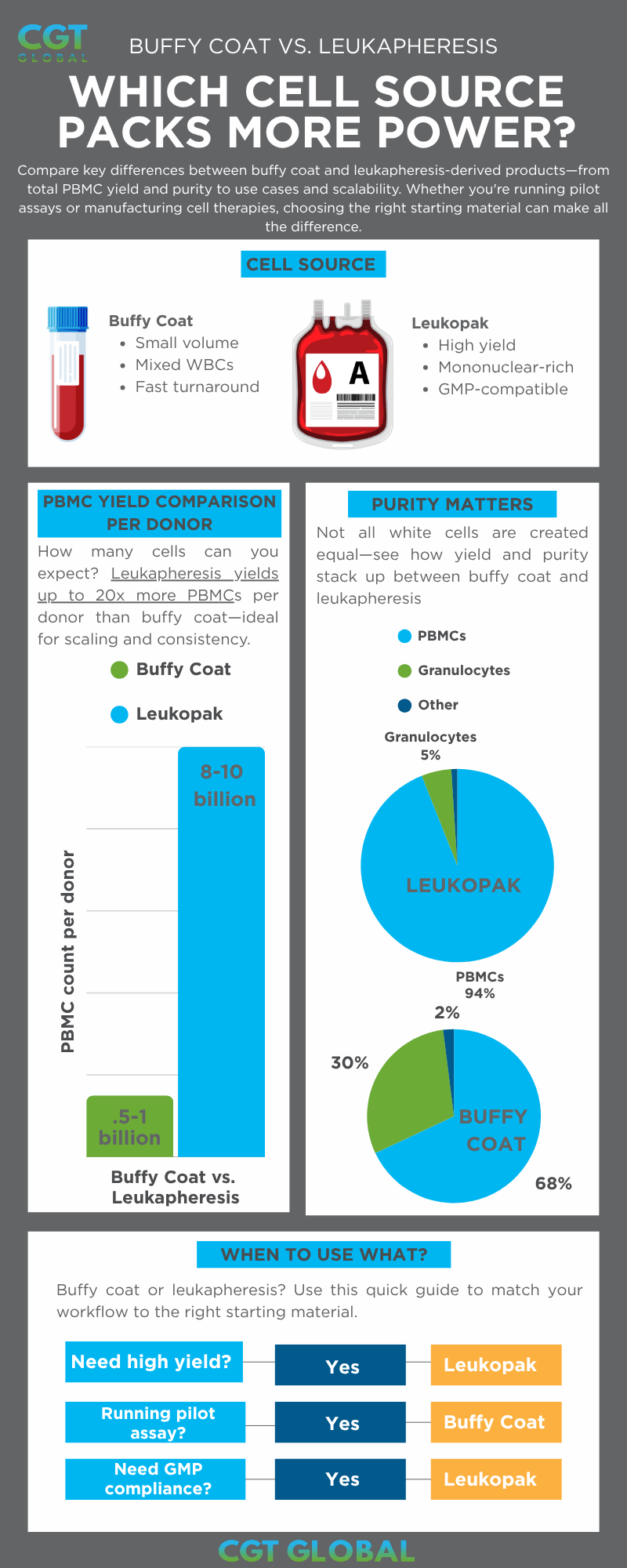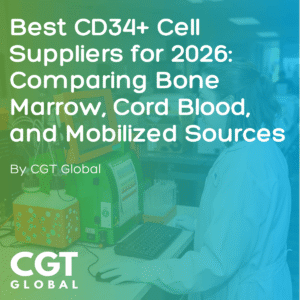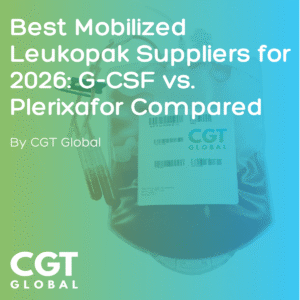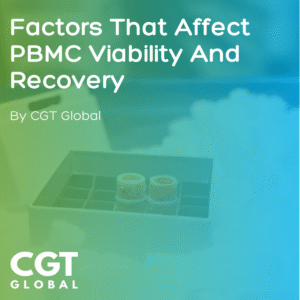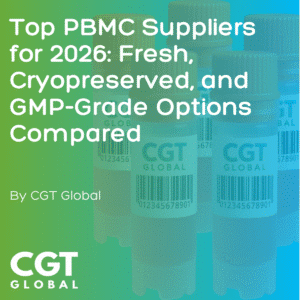By: Joanna Wirkus
Table of contents
Choosing Between Buffy Coat and Leukapheresis: A Guide for Scientists
When your research hinges on high-quality, primary immune cells, starting with the right biological material can make or break your experiment. One of the most common questions we hear from scientists is: Should I use buffy coat- or leukapheresis-derived cells? The answer depends on your goals, budget, and the scale of your study.
In this guide, we break down the differences between buffy coats and leukapheresis, including yields, purity, use cases, and when to choose each. Let’s dive in.
What Is a Buffy Coat?
A buffy coat is the thin, yellowish-white layer of cells that forms between plasma and red blood cells when anticoagulated whole blood is centrifuged. It contains both mononuclear cells (such as T cells, B cells, monocytes, and NK cells) and polymorphonuclear cells (such as granulocytes, including neutrophils and eosinophils).
To isolate peripheral blood mononuclear cells (PBMCs) from the buffy coat, researchers use density gradient separation with Ficoll. This process enriches mononuclear cells and separates them from granulocytes and erythrocytes.
Typical Use Cases:
- Early-stage assay development
- Budget-conscious studies
- Smaller-scale immunological assays
Buffy Coat Snapshot:
- Volume: ~5 mL from 500 mL of whole blood
- Cell Yield: ~1 billion PBMCs
- Contains: Mononuclear + granulocytes
- Format: Fresh (usually)
What Is Leukapheresis?
Leukapheresis is the process of sterilely removing white blood cells from the blood through the use of an apheresis machine (such as the Terumo Spectra Optia).
Using continuous flow centrifugation, peripheral whole blood is separated by density: cell-free plasma and platelets rise to the top, hemoglobin-rich red blood cells settle at the bottom, and leukocytes concentrate in the middle layer. These leukocytes are collected into a leukocyte-rich pack, or Leukopak.
The apheresis protocol can preferentially collect PBMCs—less dense than granulocytes—resulting in a mononuclear cell–rich Leukopak. PBMCs are further concentrated by red blood cell lysis and depletion of platelets and granulocytes.
Leukopaks are widely used in both research and clinical settings and have been instrumental in the development of FDA-approved cell and gene therapies such as Yescarta, Kymriah, and Breyanzi.
Leukapheresis Snapshot:
- Volume: Average 100-200 mLs for full Leukopak
- Cell Yield: up to 8.5 billion PBMCs (20x more concentrated (cells/mL) than whole blood)
- Contains: Primarily mononuclear cells
- Format: Fresh or cryopreserved | RUO and GMP available
Buffy Coat vs. Leukapheresis: Side-by-Side Comparison
| Buffy Coat | Leukapheresis (Leukopak) | |
| Volume | Small (up to ~5 mL from 500 mL whole blood) | Large (100-200 mL) |
| Cell yield | Up to 1 billion* | Up to 8.5 billion* |
| Workflow | PBMCs must be isolated immediately after blood collection, Longer process to obtain MNC including Ficol seperation | Cryopreserved Leukopaks enable flexibility |
| Standardization of Protocol | More variability | More standardized |
| Donor Variability | Higher | Reduced (more cells = consistency) |
| Time to Collect | Minutes | Hours (resource-intensive) |
| Facilities | Clinic | Clinics with specialized apheresis machine |
| Skill to acquire sample | Phlebotomist | Apheresis technician |
| Anticoagulants | EDTA, CPD, CD2D, ACD-A, and more | ACD-A |
| Best For | Pilot studies, screening | Cell therapy, scale-up, manufacturing |
| Formats Available | Fresh | Fresh, Cryopreserved, RUO, GMP |
*Actual yield may vary
How to Choose the Right Source for Your Protocol
Choose Buffy Coat When:
- You need small-scale quantities for exploratory assays
- Your project is early-stage or cost-sensitive
- Turnaround time is tight and infrastructure is limited
Choose a Leukopak When:
- You need higher yields and consistent cell quality
- You plan to expand T cells, isolate subsets, or manufacture cell therapies
- You require GMP-compliant material or cryopreservation
Why Quality and Scale Matter
Buffy coats are a fast and affordable way to get started. But when it comes to reproducibility, purity, and scaling up to clinical or translational studies, leukapheresis offers clear advantages.
At CGT Global, our Leukopaks come with:
- High mononuclear content
- Low granulocyte contamination
- Fresh or cryopreserved options
- Mobilized Leukopaks available
- Up to 8.5 billion total nucleated cells per Leukopak
- Recallable and repeat donors with donor characteristics matching
- RUO and GMP-compliant processing
We also offer rapid turnaround and coordinated shipping from our domestic clinics in Boston, Philadelphia, and Folsom.
FAQs
A buffy coat includes both mononuclear and polymorphonuclear cells. PBMCs are a purified subset enriched for mononuclear cells like T cells, B cells, and monocytes.
Depending on the donor and collection protocol, Leukopaks yield between 8 to 10 billion PBMCs per unit. That’s up to 20x more concentrated than a standard buffy coat derived from whole blood, which typically yields ~500 million to 1 billion PBMCs
No. Buffy coats are typically research-grade only. For clinical or GMP-compliant applications, leukapheresis is required.
Yes. CGT Global’s cryopreservation protocols maintain high post-thaw viability and recovery.
Ready to Get Started?
Whether you’re running a high-throughput screening or preparing for IND submission, CGT Global can help you select the right cell source.
Explore our Leukopaks →
Learn more about cell types that are pre-isolated from Leukopaks: CellsExpress™ →
Need help deciding? Contact our team for a consult.

